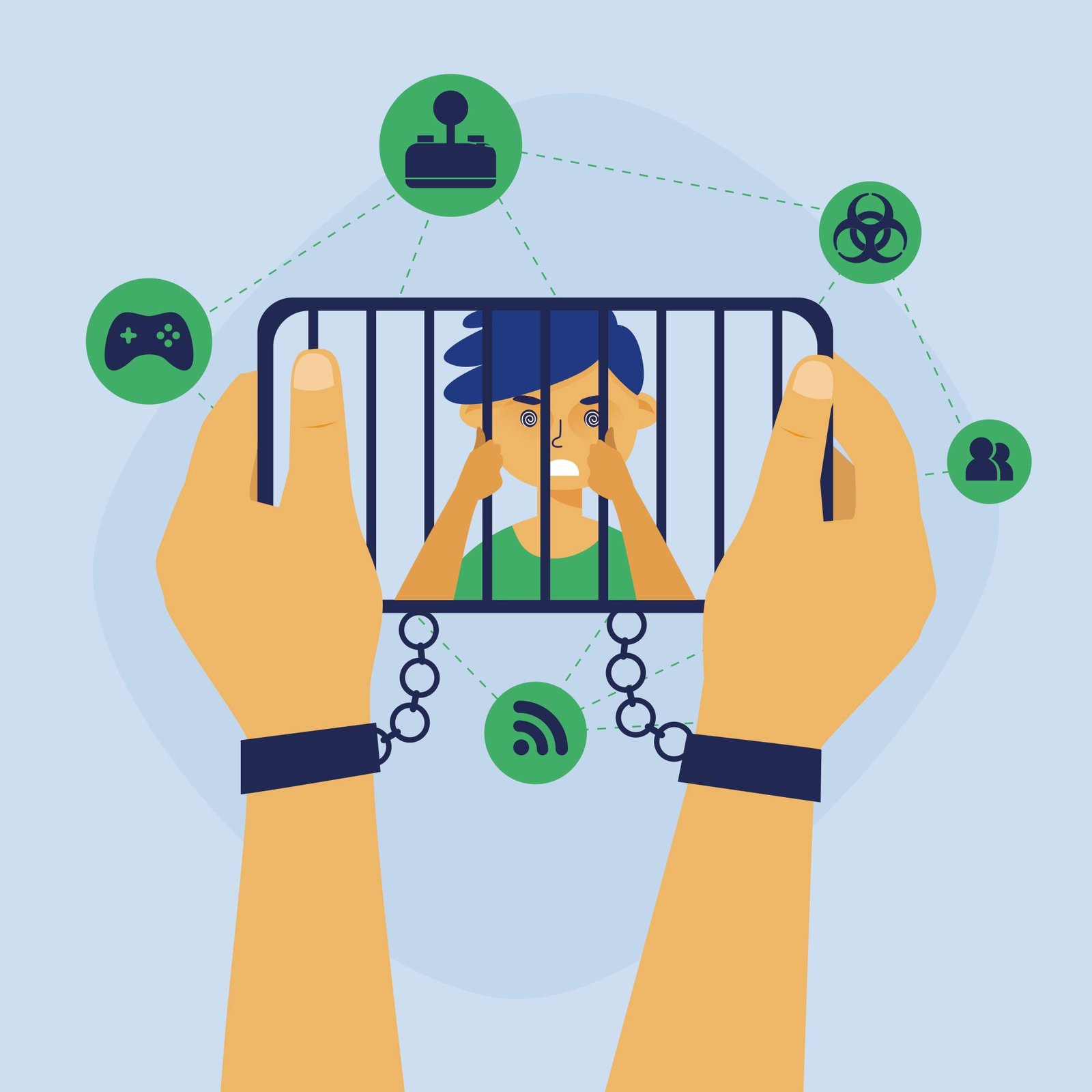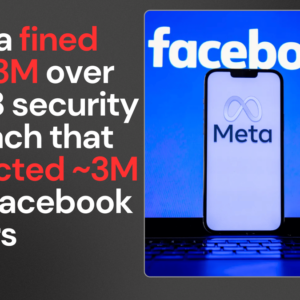Imagine losing access to your hard-earned savings in seconds that’s the harsh reality of online fraud! As we spend more time online, the number of digital fraud cases continues to rise. It’s crucial for everyone, including you and your family, to understand how to protect themselves in this digital world. In this blog post, we’ll explore what digital fraud is, share some recent examples including a concerning scam happening in India called “digital arrest” discuss different types of online fraud, and provide practical steps you can take to stay safe. Let’s dive in!
What is Digital Fraud?
Digital fraud refers to any illegal activity that uses the internet or digital devices to trick people into giving away their money or personal information. Think of it like a sneaky magician who makes your wallet disappear right before your eyes!
Common Examples of Digital Fraud
Here are a few examples of digital fraud that you might encounter:
- Phishing: This is when scammers send fake emails or messages that look like they’re from a trustworthy source, like your bank. They often ask you to click on a link and enter your personal information.
- Identity Theft: This happens when someone steals your personal information, like your name or Social Security number, and pretends to be you. They might open bank accounts or make purchases in your name.
- Fake Websites: Sometimes, scammers create websites that look just like real ones but are designed to steal your information. If you’re not careful, you might end up entering your details on one of these sites.
- Social Media Scams: Scammers often use social media to trick people into sharing personal information or money. They might pose as a friend or a celebrity to gain trust.
- Ransomware Attacks: In these attacks, hackers lock you out of your own computer or files and demand payment to unlock them. It’s like being held hostage by a computer virus!
Recent Examples of Digital Fraud
The world of online fraud is constantly changing, with new scams popping up all the time. Here are some recent cases that have made headlines:
- Digital Arrest Scam in India: A new scam has emerged in India where fraudsters impersonate law enforcement officials and claim that victims are in legal trouble. They threaten victims with “digital arrest” unless they pay large sums of money. Prime Minister Modi has warned the public about this scam, urging them to report any such incidents.
- Phishing Scams Targeting Banks: Recently, many people received emails claiming to be from their banks, asking them to verify their account information. These emails looked very real but were actually from scammers trying to steal personal data.
- Identity Theft in Online Shopping: A rise in identity theft cases has been reported during online shopping events like Black Friday and Cyber Monday. Scammers take advantage of busy shoppers looking for deals.
- Fake Charity Scams: After natural disasters or during holidays, scammers often create fake charity websites asking for donations. They trick kind-hearted people into giving money that never goes to those in need.
- Ransomware Attacks on Schools: Many schools have fallen victim to ransomware attacks where hackers lock down school systems and demand payment for access. This disrupts education and puts students at risk.
Understanding the Digital Arrest Scam
What is a Digital Arrest Scam?
A digital arrest scam is an online scheme where fraudsters impersonate law enforcement officials and intimidate victims into paying money under false pretenses. They falsely accuse individuals of illegal activities and create a sense of urgency that pressures victims into compliance.

How Does the Digital Arrest Scam Work?
In a typical digital arrest scam:
- Impersonation: Scammers pose as law enforcement officials like CBI agents or income tax officers and contact victims via phone calls.
- Video Communication: They often request victims switch to video calls through platforms like WhatsApp or Skype for legitimacy.
- Threats: The scammers threaten victims with a digital arrest warrant for alleged crimes such as tax evasion or financial misconduct.
- Coercion: Victims are coerced into transferring money under the guise of clearing their names or paying refundable deposits.
- Disappearance: Once the payment is made, the scammers vanish, leaving victims with financial losses and potential identity theft.
How to Avoid Becoming a Victim of Digital Arrest Scam
To protect yourself from falling victim to this scam:
- Be Suspicious: Always question calls from supposed officials claiming you’re in trouble, real law enforcement will never ask for payments over the phone.
- Verify Identity: If you receive such calls, verify their identity by contacting the relevant agency directly.
- Stay Calm: Don’t give in to pressure tactics, take time to think before acting.
- Avoid Sharing Personal Information: Never disclose sensitive personal or financial details over calls or video chats with unknown numbers.
- Report Suspicious Activity: If you suspect you’re being scammed, report it immediately to local authorities or cybercrime units.
How Many Types of Online Fraud Are There?
Online fraud comes in many forms! Let’s break down some common types:
Identity Theft
Identity theft occurs when someone steals your personal information without permission. This could be through hacking into accounts or stealing physical documents like credit cards or passports.
Phishing
Phishing is one of the most common types of online fraud. It involves sending fake emails or messages that appear legitimate, tricking people into revealing sensitive information.
Investment Fraud
Investment fraud happens when scammers promise high returns on investments that don’t exist. They might use fancy presentations or fake testimonials to lure victims into investing their money.
Cyber Extortion
Cyber extortion involves threatening individuals or businesses with harm unless they pay money. This could include stealing sensitive data and threatening to release it publicly if the ransom isn’t paid.
Credit Card Fraud
Credit card fraud occurs when someone uses another person’s credit card information without permission. This can happen through data breaches or phishing scams where victims unknowingly provide their card details.
Which Laws Protect Against Online Fraud?
To help keep us safe from online fraudsters, there are several laws designed to protect consumers:
Cybersecurity Information Sharing Act (CISA)
This law encourages companies to share information about cyber threats with each other and the government. By working together, they can better protect against online threats.
Computer Fraud and Abuse Act (CFAA)
The CFAA makes it illegal to access computers without authorization or commit fraud using computers. It helps law enforcement tackle cybercriminals effectively.
General Data Protection Regulation (GDPR)
In Europe, the GDPR protects individuals’ personal data and privacy online. It requires companies to handle personal information responsibly and gives consumers more control over their data.
Fair Credit Reporting Act (FCRA)
The FCRA promotes accuracy and privacy in consumer credit reporting. It helps protect consumers from identity theft by ensuring they have access to their credit reports.

Global Statistics on Online Fraud Cases
Understanding the scale of online fraud can help us realize how important it is to stay vigilant. Here are some eye-opening statistics:
- According to recent reports, cybercrime costs the global economy over $1 trillion annually!
- A survey showed that nearly 1 in 4 people have experienced some form of online fraud in their lifetime.
- Phishing attacks have increased by over 600% since 2020, making it one of the fastest-growing types of online fraud.
- The Federal Trade Commission (FTC) reported that identity theft complaints surged by 113% in 2020 compared to previous years.
These numbers highlight the need for everyone to be aware of online safety practices!
Practical Steps to Protect Yourself
Now that we understand what digital fraud is and how it works, let’s talk about how you can protect yourself! Here are some practical tips:
Use Strong Passwords
Create strong passwords that are hard for others to guess. A good password should be at least 12 characters long and include a mix of letters, numbers, and symbols. Avoid using easily guessed information like birthdays or pet names!
Enable Multi-Factor Authentication
Multi-factor authentication adds an extra layer of security by requiring two forms of identification before accessing an account. For example, after entering your password, you might receive a text message with a code that you need to enter as well.
Recognize Phishing Emails
Be cautious about emails that ask for personal information or contain suspicious links. Always check the sender’s email address carefully—scammers often use addresses that look similar but aren’t quite right!
Avoid Risky Links
If you receive a link from someone you don’t know or looks suspicious, don’t click on it! Instead, hover over the link with your mouse (without clicking) to see where it leads before deciding whether it’s safe.
Keep Software Updated
Make sure all your devices have the latest software updates installed. These updates often include security patches that help protect against new threats.
Use Antivirus Software
Install reputable antivirus software on your devices. This software can help detect and block malware before it causes harm.
Educate Yourself and Others
Stay informed about common scams and share this knowledge with friends and family. The more people know about potential threats, the safer everyone will be!
Stay One Step Ahead of Cybercriminals!
Protecting yourself from online fraud doesn’t have to be overwhelming! By taking small steps every day like using strong passwords and being cautious about what you click you can significantly reduce your risk of falling victim to scams. Remember, staying safe online is all about being aware and proactive!
Conclusion
In today’s digital world, being aware of online fraud is more important than ever! By understanding what digital fraud is, including alarming scams like digital arrest, and knowing how to protect yourself, you can enjoy all the benefits of technology without fear. So remember these tips use strong passwords, recognize phishing attempts, avoid risky links, and stay informed about new scams.
Let’s work together to keep ourselves safe online! Stay vigilant and secure because a little caution goes a long way in protecting what matters most!
For more resources on cybersecurity tips and how to stay safe online, check out government websites like the Federal Trade Commission (FTC) or cybersecurity blogs dedicated to helping users recognize common scams.
By taking these steps seriously today, you can help ensure a safer tomorrow for yourself and others in our increasingly connected world!












